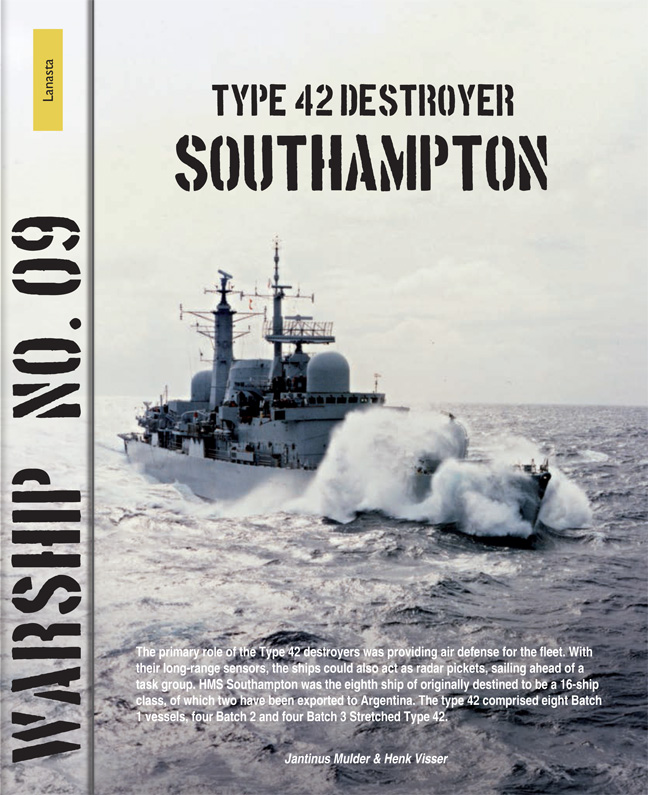Book contents
Summary
The replacement for the destroyers of the County-class, were much more compact and austere than their fore bearers. The primary role of the Type 42s was to provide area air defence for the ships they had to escort. With their long-range sensor fit they also could act as radar pickets, sailing ahead of a Task Group to act as its eyes and ears.
The loss of HMS Sheffield and Coventry demonstrated, this latter role denied the ships supporting fire from accompanying warships and highlighted their vulnerability.
DEVELOPMENT
In the 1960s the Royal Navy was still one of the premier carrier fleets in the world, second only to the US Navy which was in the process of building 80,000 tons aircraft carriers of the Kitty Hawk-class. The increasing weight and size of modern jet fighters meant that a larger deck area was required for take offs and landings. Although the Royal Navy had come up with increasingly innovative ways to allow ever larger aircraft to operate from the small flight decks of their carriers and to maintain air groups of a size large enough. It was decided that it would be necessary to commission a new class of large fleet carriers; the CVA-01.
On 14 February 1966, after a day long meeting, the Cabinet decided to cancel the plans for the construction of the new carrier. The Labour government calculated that maintaining a carrier air group East of Suez would be 60% more expensive than as a land based airforce. Along with the cancellation went the proposed Type 82 destroyers designed to escort them. This led to new Staff Requirements for a smaller fleet escort capable of providing area defence. The result was the much more compact Type 42 guided missile destroyer (DDG), which achieved significant savings on cost and displacement by dropping the Ikara long-range ASW missile and Limbo mortar and adopting an all-gas turbine (COGOG) propulsion system, using Rolls-Royce Olympus turbines for main drive and Tynes for cruising.
Although lacking Ikara, the ASW capability was greatly improved over previous ships by providing a hangared Lynx light helicopter (armed with torpedoes and missiles). Unlike Bristol the forecastle deck extends right aft to form the helicopter flight deck, leaving a small covered quarterdeck below for handling mooring wires.
- Type
- Chapter
- Information
- Type 42 Destroyer Southampton , pp. 2 - 56Publisher: Amsterdam University PressPrint publication year: 2019

